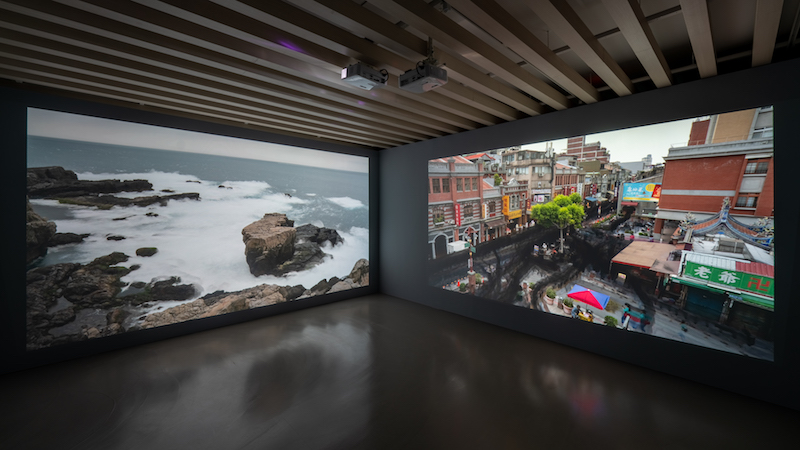
The concept of the Drawing Study Series originated in 2010 during Wu Chi-Tsung’s residency in Manchester, U.K. Fascinated by the dialectical tension between temporality and eternity in time, he has been experimenting with various video shooting techniques since college. However, it was not until 2021 did he finally develop a real-time image processing system that could process frames in the image in real time during recording, and accumulate the variations frame by frame, so as a linear development of time is recorded and presented. Hence, the boundary between photography and painting is blurred, and a unique visual experience in-between dynamic and static is achieved as if physical thickness were added to time.
In 2021, while visiting the TAO ART SPACE, Wu Chi-Tsung was captivated by the Buddhist statues from the gallery’s HU BU TANG Collection of antiques. The eternal beauty of the statues sparked him to apply the concept and techniques that had long been incubating in his mind. Similar to how he made use of the light to develop images on films in “Self-Portrait” (2004), Wu Chi-Tsung once again uses a flashlight as a paintbrush to capture the silhouette of the statues and records the tails of light in space, allowing the outlines of the Buddhist statues to gradually appear. The gentle movement and the dim glow have created a yūgenism (profound grace and subtlety) atmosphere, symphonizing the timeless quality of the statues that were created centuries ago.
Wu Chi-Tsung also applied the same video technique to the daily city scenes in Taipei and the oceanic scenery at Longdong in northern Taiwan. By setting various parameters to adjust respectively the transparency and the lightness of the images, the artist has skillfully played with the video shooting process as a record of time, transforming into a process that is similar to painting, having lights layered on.
Curator Chia Chi Jason Wang comments that “although they originate from reality, what the artist offers are sceneries that can never happen in the phenomenal world. The artificial fabulation of Wu Chi-Tsung exists in-between reality and fiction, expanding for the works room of philosophical and aesthetic dialectics and allowing viewers to ruminate on the notion of noumenon (or thing-in-itself) and truth.”
《寫生習作》系列的概念起源於2010年吳季璁在英國曼徹斯特駐村期間。藝術家著迷於時間中瞬間與永恒之間的辯證關係,自大學時期即嘗試各種影像創作,以捕捉這種張力。然而,直到2021年,在數位影像技術的發展下,得以落實10年前的想法,開發出一套即時演算的影像處理系統,完成了這個醞釀多年的計劃。這套系統可以在錄製時即時處理影像中的影格,令其逐層疊加。從而模糊攝影和繪畫之間的界限,呈現一種介於動態和靜態之間的獨特視覺體驗,令時間擁有了物理性的厚度。
2021年,當吳季璁受邀參觀位於台北的藝術空間Tao Art Space時,受其名為「胡不堂」的古董收藏系列中的佛像雕塑深深吸引。佛像的永恒之美啟發其應用長期以來在他腦海中醞釀的概念和技術。近似於2004年的作品《自畫像》中利用光線在膠片上顯影的手法,吳季璁再次用手電筒作為畫筆,捕捉佛像的輪廓,記錄空間中的光跡,讓佛像的輪廓逐漸顯現,與早年作品不同的地方在於,本次為藝術家第一次使用全數位影像的邏輯創作。輕柔的動作和昏暗的光線創造了一種幽玄的氛圍,交響出幾個世紀前佛像的永恒與靜謐。
在《寫生習作》系列中,除了上述的佛像作品外,吳季璁亦將同樣的影像技術應用於臺北的日常市景和位於臺灣北部龍洞的海景中。通過設置不同的影像參數,分別調整圖像的透明度和亮度,並將圖像的影格層層疊加,操控錄影時的光線效果,將錄像拍攝轉變為具時間性的繪畫。策展人王嘉驥評論說:「儘管本於現實,創作者提供的卻是現象界不可能真實發生的圖景。吳季璁的人為擬造,存乎現實與虛構之間,擴延了作品的哲學暨美學思辨空間,觀者得以反芻本體與真實。」
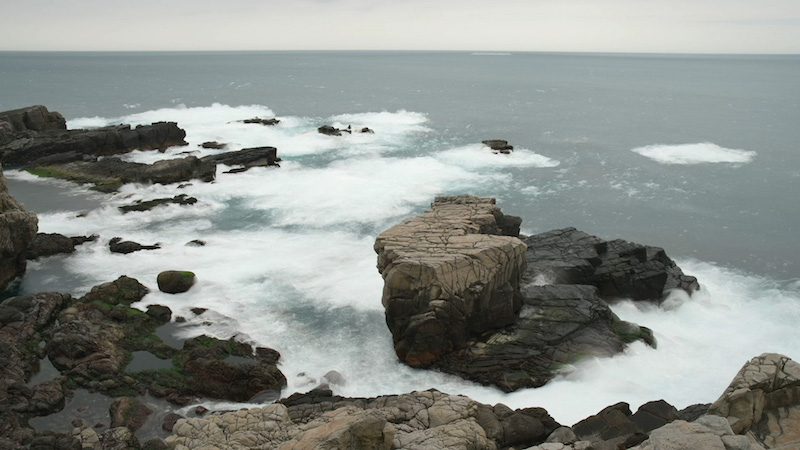
Drawing Study 001 – Seascape LongDong
《寫生習作 001 – 龍洞海景》
2021
Single Channel Video
單頻道錄像
00;04;00
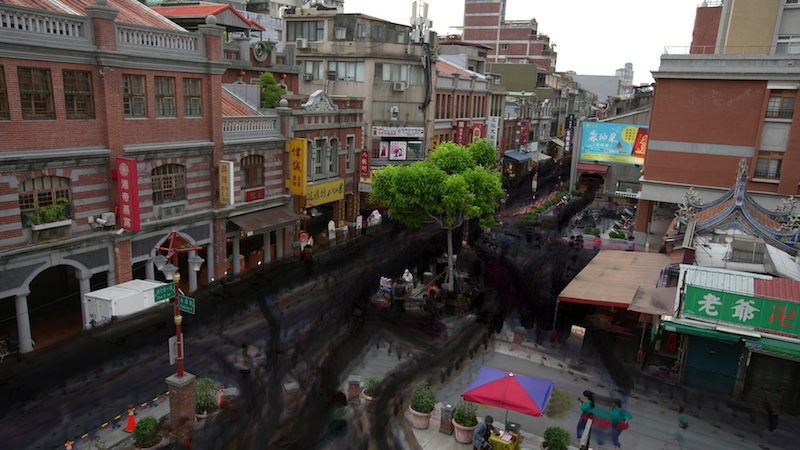
Drawing Study 002 – Urbanscape Taipei
《寫生習作 002 – 台北市景》
2021
Single Channel Video
單頻道錄像
00;04;04
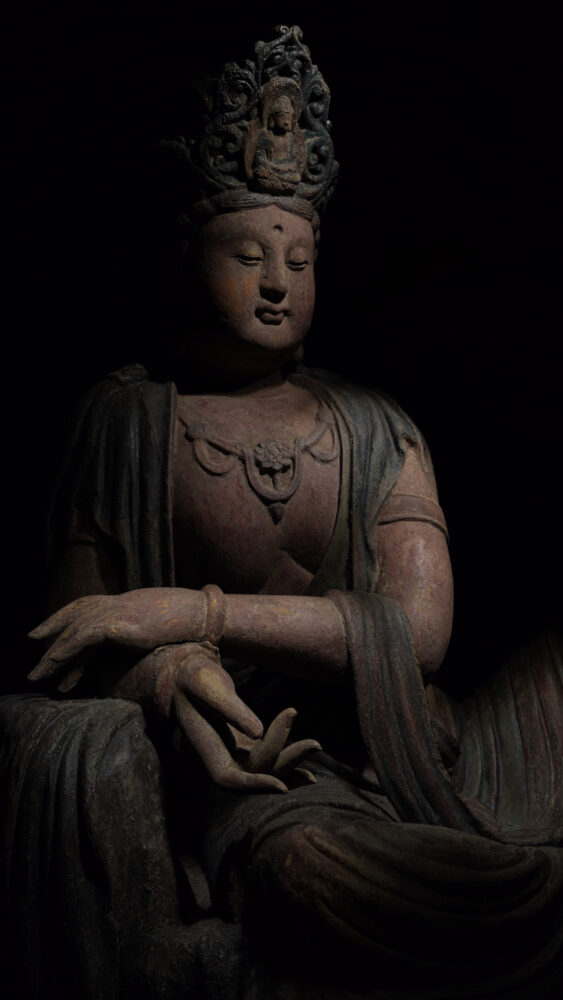
Drawing Study – MAO Bodhissatva Guanyin
《寫生習作 - MAO觀音自在坐》
Single Channel Video
單頻道錄像
Acquired by Museo d’Arte Orientale di Torino
於杜林東方藝術博物館典藏
2022
00;06;30
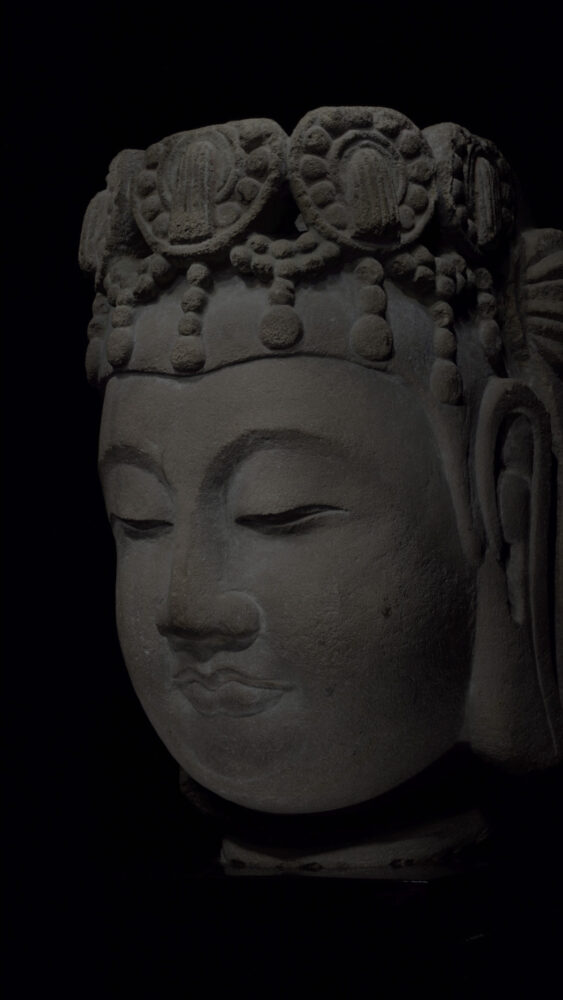
Drawing Study – Limestone Head of Bodhisattva, Sui Dynasty
《寫生習作 - 隋 灰石菩薩首像》
2021
Single Channel Video
單頻道錄像
00;21;01